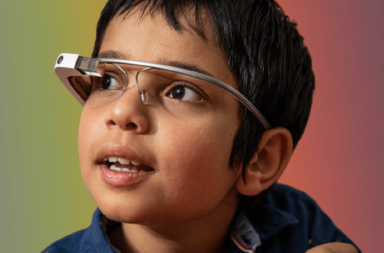So, it’s time to have ‘that’ talk. Perhaps you’ve set up your computer, typed in ‘explaining autism to kids’ and found a surefire method from a promising online autism forum. Perhaps you’re now feeling pretty confident and are even pumped to use the info you gained from ‘YummyMummy82’ to give the best explanation of autism anyone has ever seen…
That’s great! Feeling positive is the ideal way to go into these complicated conversations … but (and I bet you saw that ‘but’ coming a mile off), when it comes to explaining autism to kids, the advice you will receive online isn’t always as fool-proof as it can seem – in fact, sometimes it can be pretty pants.
This is because autism is a spectrum condition and, as we are all different in the community, each individual needs a different approach. But, fret not, as this doesn’t mean you are out on your own by any stretch. It just means you need guidance not guidelines. You need some dos and maybe some don’ts. You need a few solid examples of how to explain autism to kids and, for all of that, you need to keep reading.

The Dos and Don’ts of Explaining Autism
DO use the 5Ws to prepare:
It’s one of the oldest tricks in the book, but when it comes to explaining, well, anything, it’s always important to consider the 5 Ws: who, what, where, when and why. This is critical for any given explanation and can be interpreted in many different ways. However, when explaining autism to kids it means:
- Who is going to make the explanation? – Somebody they trust.
- What is going to be said? – Don’t free style it.
- Where is it going to happen? – Somewhere they are comfortable and can process the information
- When is the discussion going to happen? – When there is plenty of time afterwards and during a few checkups in the days after.
- Why are you telling them? – Because it will give them an identity and self-understanding.
DON’T let preparation get in the way of an explanation:
With that said, no matter how hard you do plan an explanation, there will ALWAYS seem like a better time to push back the discussion. Don’t let this deter you from diving in and, furthermore, don’t let it become an excuse for you to kick the can down the road.
Remember, a half-baked explanation will always be better than a surprise off the cuff one and, if you’re not going to do it, then the chances are they will hear it on the playground, online or worse… they might go their entire early life without an explanation for why they feel different (and believe me, we know we’re different).

DO research as much as you can about autism before you have to explain it:
Children are naturally inquisitive and when that child is also autistic, oh boy, are you in for a lengthy discussion. This is because autistic brains don’t settle for a basic understanding of any topic and our questions won’t cease until our knowledge is champion of all.
As such, it’s definitely worth brushing up on a few questions before you enter your explanation and beware of questions like:
- How many people are autistic? – 1 in 100
- Can autistic people drive? – Sometimes
- What does being autistic actually mean? – Your blood is made of 100% awesome
DON’T try and learn everything:
While it’s great that you want to answer as many questions as possible, the reality is that there is no point wasting your time preparing to respond to every question, when some answers simply don’t exist yet i.e. what really causes autism and why it changes so much from person to person. As such, it’s okay to tell the autist that you don’t have an answer – so long as you let them know that, right now, no one does.
However, this isn’t something to be frightened about. It’s exciting and I would encourage you to frame it this way during your conversation. If someone is autistic, then let them know they are at the forefront of science. It’s pretty awesome that our community is united by endless secrets that could shake the entire world of academia if unlocked, so let everyone join in on this wonder.

DO your best to be as conclusive as possible:
Most autistic people work on absolutes, so you’ll want to avoid casting any doubts in our minds when explaining autism to us. One way to achieve this is to have lots of examples ready for your discussion or even by bringing a few props which can be used as reference points.
Some great examples here include the use of mentioning autistic celebrities that the person might know and then focusing on how that celeb has used/overcome their various traits to find success. Alternatively, social stories are also good to have on hand during an autism discussion as, they can easily be tailored to the autist, they will help guide the conversation and they should make information easier to digest.
DON’T create certainties that the autist can’t realise:
It’s true that comparisons will help an autistic person understand our condition better. However, don’t be so reliant on them that we are stuck with that reference as our impression of autism forever.
Every autistic person is entirely unique and will go their own way in life. So, it will only be confusing if all you talk about in your discussion is a celeb like autistic motorcycle racer Guy Martin, especially if that autist grows up without the hand eye co-ordination to ever ride a push bike. Work around this by ensuring that any examples are merely representations of autism and not benchmarks for what we should achieve.

DO deliver the news in a positive angle:
There are many, many positives to being autistic. However, all too often we choose to focus on the disadvantages the condition brings when discussing it out loud. Avoid this when explaining autism to kids by ensuring you focus on the positives during your discussion. Remember, first impressions count, so how you choose to phrase your discussion will likely leave a lasting impression.
If you’re stuck for ways of how to speak positively about autism, firstly… seriously? But secondly, check out this article on why autistic people are superheroes and, if that doesn’t inspire you, then maybe consider handing the reins of the upcoming autism explanation to someone else…
DON’T be afraid to be realistic:
It’s always a tough pill for me to swallow but, regardless of my can-do attitude, having autism isn’t always sunshine and rainbows. There are a lot of challenges which come along with being this way and, while yes, I am proud of who I am, I’m glad that I was aware that there would be challenges from the start.
Obviously, this doesn’t give you permission to be a ‘Debbie Downer’ when exploring autism with a child. However, it’s important to set expectations and be realistic about the barriers we can face in life. When I was younger, there were plenty of things I was told I wouldn’t be able to do when I grew up and, while it was tough to hear, I now understand the importance of it being said, and besides, it made smashing those expectations so much more satisfying in the long run.

DO remember that explaining autism to kids means kids (plural):
It’s easy to get lost in ensuring your explanation is on point when it comes to having The Conversation with an autistic child but, don’t forget, there are other people in the equation who will likely need to be aware of the diagnosis, e.g. a sibling or chums in the school playground.
Stay on top of this by ensuring that schools deliver autism awareness classes to all pupils where applicable and, when appropriate, make sure that no sibling is left in the dark about a family member’s diagnosis. Although both these explanations can be given using the advice from this post, I intend to write a ‘how to’ guide for explaining autism to these audiences shortly (so, stay tuned).
DON’T use an explanation of autism to out an autistic child:
Did you read that title? It said ‘don’t use an explanation of autism as an opportunity to out an autistic child’. I repeat, don’t out autistic children! Sure, it might seem like a good idea to round up a lesson by using us as evidence but
- Children are the cruellest creatures on God’s green Earth and, I promise, that one will inevitably use the information against the autist
- It is our diagnosis to share, not yours.
The whole purpose of telling other children about a diagnosis, is so that when the autist themselves opens up, they will be in a position where they will be seen as an individual and the person they are telling will understand that the knowledge of their diagnosis shouldn’t change their relationship.
Holding your finger out and pointing at us during an explanation will only result in other children using their immediate preconceptions to judge us, or they will come to see the autist in question as an archetype of the condition, which can be just as challenging later on.

Examples of explaining autism to kids
When looking for examples of ‘how to explain autism to a child’, many of the explaining autism articles will quote Tony Attwood’s tactic of leading the conversation with: ‘Congratulations, you’re autistic!’ – and why wouldn’t they? This approach is brilliant, it’s quick and to the point (just what autistic people love) and it also starts said person on their autism journey on such a happy note.
However, having said that, I think we can do one step better. After all, while you won’t see me questioning the beauty of Attwood’s simplicity, it lacks an explanation as to what autism is – which can be scary as an unknown opener so, instead, here is my example of how I would begin an explanation of autism discussion:
So, right off the bat, once you have settled on a time and place for the explanation, begin by asking the autist what they think they are good at. If they struggle to find an example, coach them towards one with a suggestion such as ‘don’t you think you’re good at X?‘. Then, once you’ve got a few good examples under your belt, ask what the person thinks they’re not so good at. Chances are, all of these things will have some relation to autism and, from there, lead up the introduction by saying something like ‘did you know that there’s a name for people who are good at X but not that good at Y?’ and then say that the name is ‘autism‘ .
Where the conversation goes from here really depends on yourself and the autist. However, if you implement the advice shared today, I’m sure you’ll smash it.
Remember that once the discussion is finished, you will still likely need to check in on that person throughout the future – so don’t pat yourself on the back just yet. There is a long way to go from understanding to accepting and then finally embracing an autistic identity and ensuring the driver knows they are not alone on this journey is perhaps one ‘do’ you don’t want to forget.

Carry on the Conversation:
But there you have it, how to explain autism to a kid 101. If you have additional dos or don’ts which you would like to add today, feel free to leave a comment below. And, if you would like to read more in the how to discuss autism series, why not check out this article on How to Tell a Friend that you are Autistic.
As always, I can also be found on Twitter @AutismRevised and via my email: AutisticandUnapologetic@gmail.com.
If you like what you have seen on the site today, then show your support by liking the Autistic & Unapologetic Facebook page. Also, don’t forget to sign up to the Autistic & Unapologetic newsletter (found on the sidebar on laptops and underneath if you are reading this via mobile) where I share weekly updates as well as a fascinating fact I have found throughout the week.
Thank you for reading and I will see you next Saturday for more thoughts from across the spectrum.


